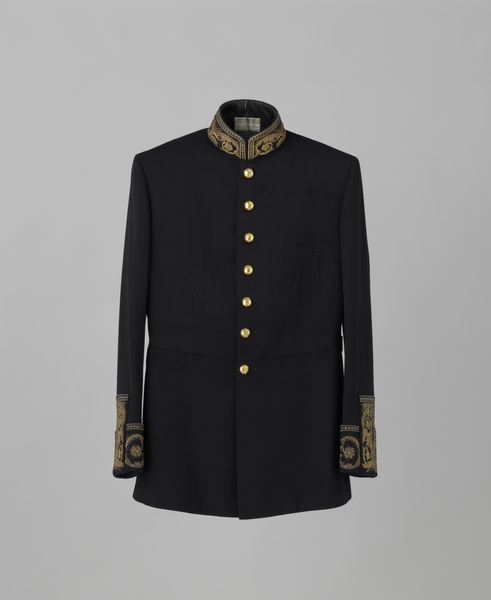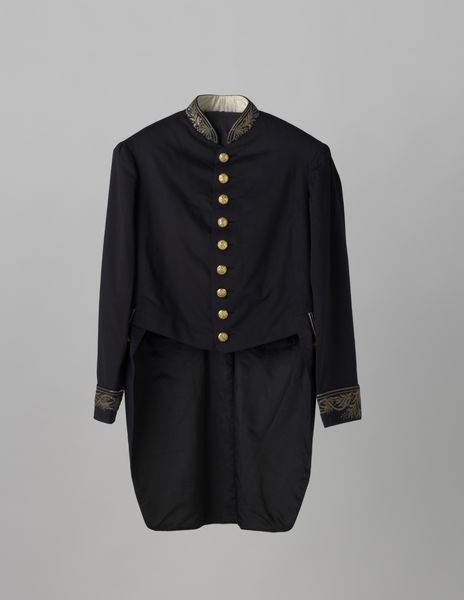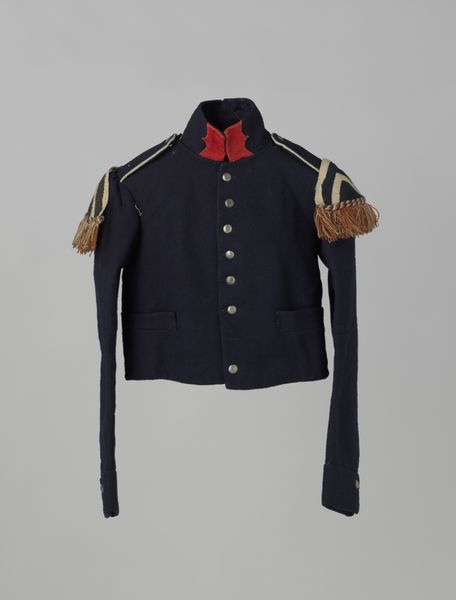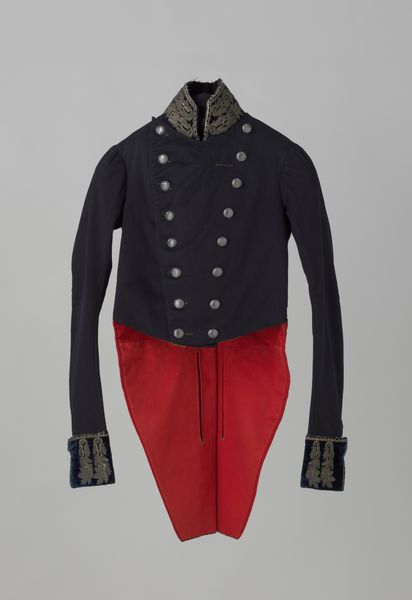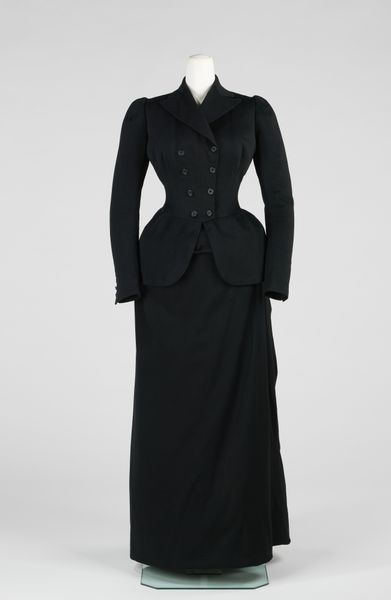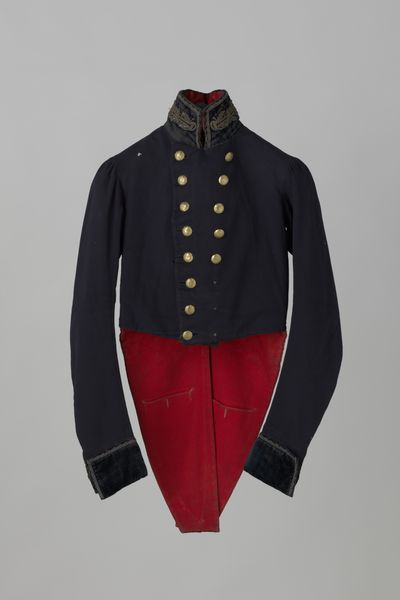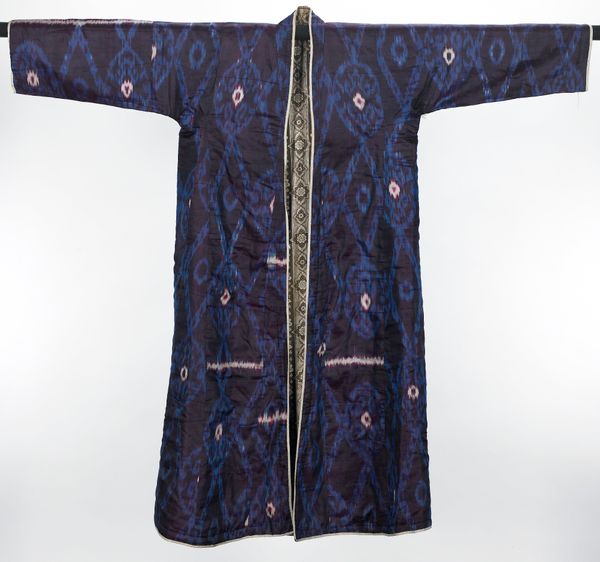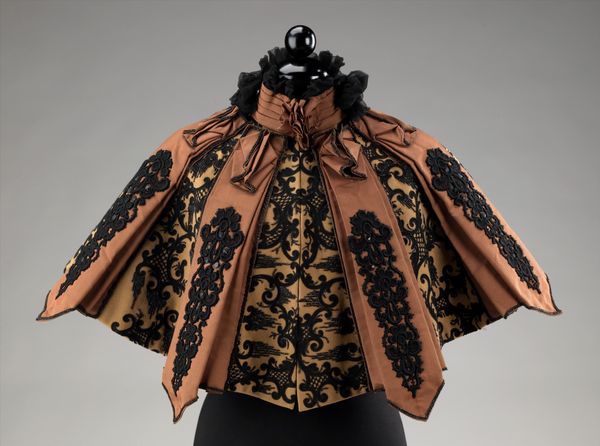
Rokjas van gala-kostuum van lid Erewacht tijdens de inhuldiging van koningin Juliana Possibly 1923 - 1929
0:00
0:00
photography
#
portrait
#
fashion design
#
underwear fashion design
#
fashion mockup
#
clothing promotion photography
#
photography
#
clothing photography
#
wearable design
#
clothing theme
#
clothing photo
#
decorative-art
#
fashion sketch
#
clothing design
Dimensions: length 45 cm, length 97 cm, length 51 cm, width 44 cm, length 64.5 cm, diameter 2 cm
Copyright: Rijks Museum: Open Domain
Editor: Here we have a photograph entitled "Rokjas van gala-kostuum van lid Erewacht tijdens de inhuldiging van koningin Juliana," possibly taken between 1923 and 1949 by the Gebroeders Domhoff. It's a stark, frontal view of what seems to be a ceremonial coat. I’m struck by the simplicity of the dark fabric punctuated by the gold buttons and embroidery. What story do you think this garment tells? Curator: It speaks of power, Editor. More specifically, symbolic authority and the performance of civic duty. Think of the golden laurel wreaths embroidered on the collar and cuffs— a classical motif of victory and honor adapted to signal loyalty to the crown. These symbols were consciously chosen to communicate messages of tradition, stability, and national pride during the queen's inauguration. Editor: So the details are like a language? Is the coat also meant to visually legitimize the monarchy, maybe in a period of potential instability? Curator: Precisely! Consider the black fabric. Black is often associated with solemnity, formality, and power, further reinforcing the gravity of the occasion and the dignity of the wearer, part of the honor guard. It's not just fashion; it's carefully constructed visual rhetoric meant to solidify an image. The choice of these colors together isn't random, nor the decision to photograph and memorialize the piece this way. It's a legacy, coded into fabric. Editor: That makes me see it in a completely new way. The garment seems more loaded with intention now. Thank you. Curator: It’s always there if you’re willing to look. These objects, in a way, perform cultural memory for us.
Comments
No comments
Be the first to comment and join the conversation on the ultimate creative platform.

